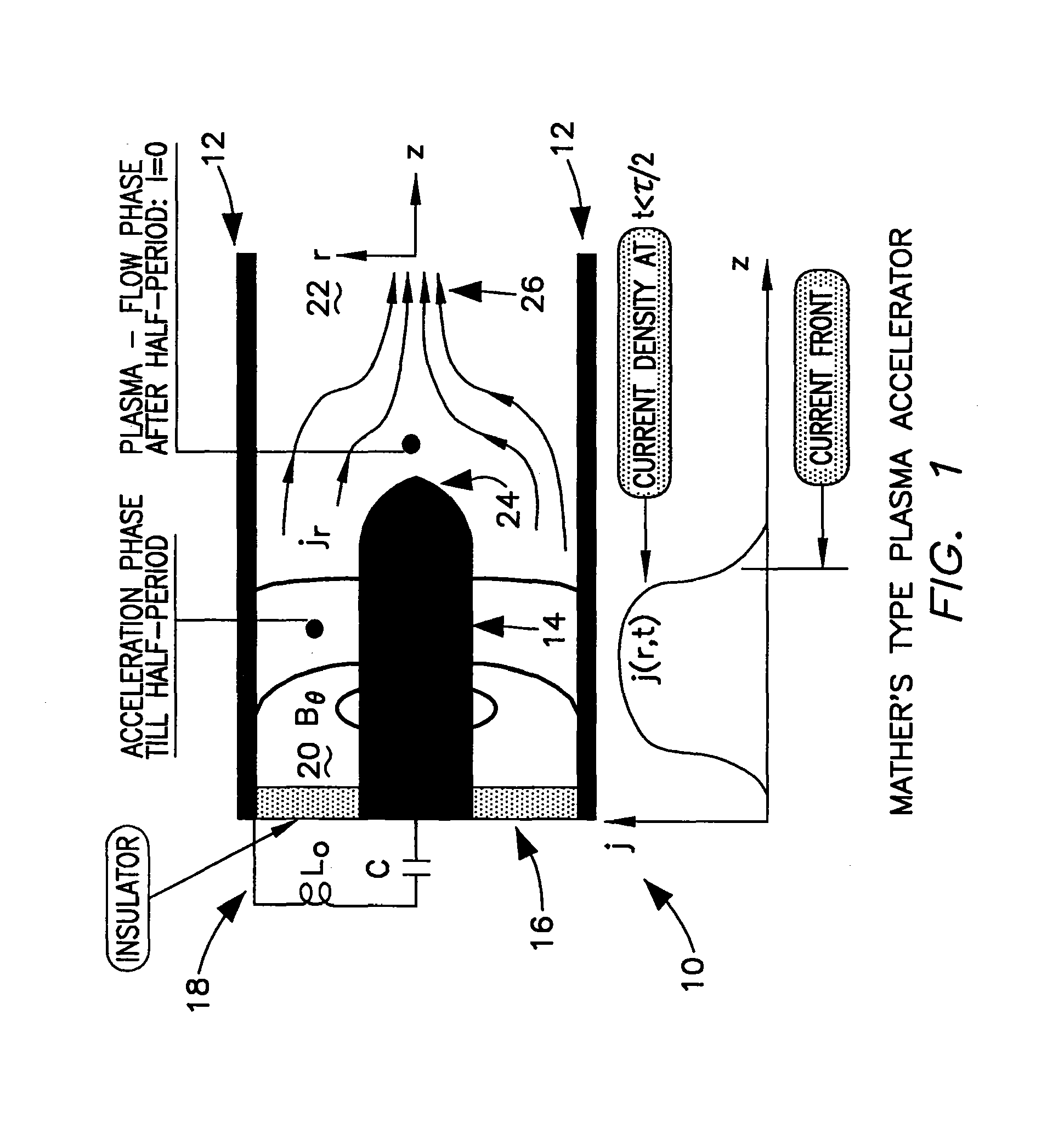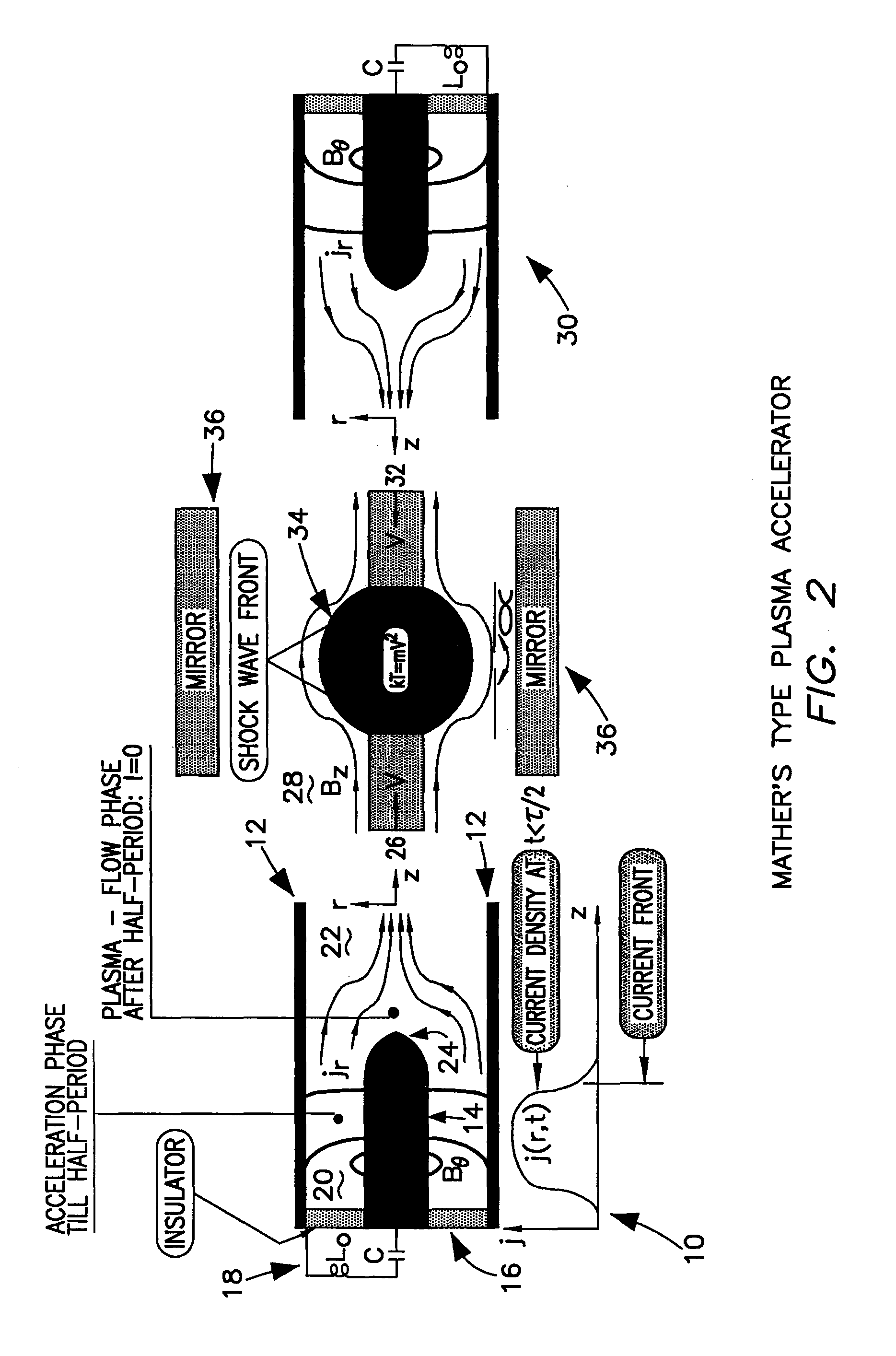Method for generating extreme ultraviolet with mather-type plasma accelerators for use in Extreme Ultraviolet Lithography
a plasma accelerator and mather-type technology, applied in the field of extreme ultraviolet lithography, can solve the problems of low efficiency, short lifetime of electrodes and optical components, and high cost of lasers of sufficient power, and achieve the effects of improving the efficiency of lasers, shortening the life of electrodes and optical components, and reducing the cost of lasers
- Summary
- Abstract
- Description
- Claims
- Application Information
AI Technical Summary
Problems solved by technology
Method used
Image
Examples
Embodiment Construction
[0019]A plasma accelerator for use with this invention is shown generally at 10 in FIG. 1. This plasma accelerator is referred to as a Mather's type accelerator. The plasma accelerator comprises cathodes 12 and typically a central anode 14 electrically isolated from one another by insulator 16. Circuit 18 provides power to the anode 14 and cathodes 12. The initial phase in which the voltage pulse is applied across the electrodes when a spark gap is triggered breaks down over the insulator 16. A current front is formed and the plasma (ions and electrons) lifts off from the cathode 12. The current sheath moves down the length of the cathode 12. The motion is caused by the J×B force where J is the current vector that goes down the cathode 12, across the gap 20, and up the inner electrode (assuming a positive outer electrode). The resulting magnetic field, Bθ, encircles the inner electrode and the force applied to the plasma, F, is directed to the cathode opening 22. During the rundown ...
PUM
 Login to View More
Login to View More Abstract
Description
Claims
Application Information
 Login to View More
Login to View More - R&D
- Intellectual Property
- Life Sciences
- Materials
- Tech Scout
- Unparalleled Data Quality
- Higher Quality Content
- 60% Fewer Hallucinations
Browse by: Latest US Patents, China's latest patents, Technical Efficacy Thesaurus, Application Domain, Technology Topic, Popular Technical Reports.
© 2025 PatSnap. All rights reserved.Legal|Privacy policy|Modern Slavery Act Transparency Statement|Sitemap|About US| Contact US: help@patsnap.com



